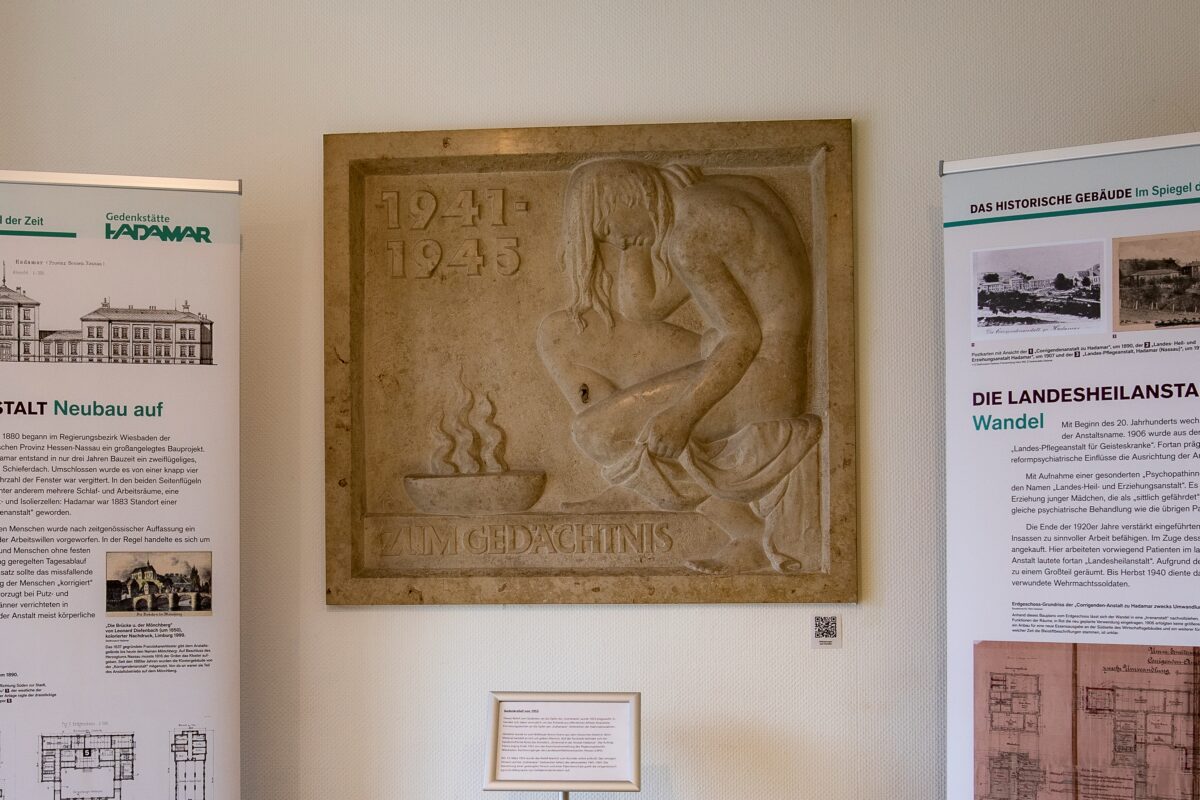The manner in which those who were murdered at the Hadamar killing centre are remembered developed in stages after the end of the war in 1945 and was interrupted by long periods of suppression. It was not until the exhibition was opened in the basement of the historical building in 1983 and Hadamar Memorial Museum was founded several years later that a continuity in remembering and remembrance was established.
It was American occupying soldiers, not Germans, who first made the crimes in Hadamar public. After liberation on 26 March 1945, a special US Army unit investigated the crimes in Hadamar. Newspapers and weekly newsreels in Great Britain and the US then began reporting about the killing centre. Already in 1945, a first trial was conducted before a US military court in Wiesbaden.
Although the crimes were illuminated early on, they were soon suppressed and sometimes denied, even in the state sanatorium that continued to exist. Even the relief that was inaugurated in the entrance hall of the institution in 1953 to commemorate those murdered could not change this general attitude. What was typical for this period was that the message on the relief remained vague. Only the inscribed years 1941 to 1945 pointed to the “euthanasia” murder phase in Hadamar.
The areas of the institutional cemetery, where those murdered were buried in mass graves between 1942 and 1945, were transformed into a memorial landscape that was solemnly inaugurated in September 1964. Since then, a monument stands there bearing the cautionary inscription “Mensch achte den Menschen”, meaning “Man, honour mankind”. The relief, the memorial landscape and the monument exist there to this day. But from a contemporary perspective, they did not lead to lasting remembrance work. This observation applies not only to Hadamar, but also to remembering those murdered in the course of Nazi “euthanasia” crimes as a whole. They remained among the forgotten victims in Germany for decades.
It was not until the 1980s that the social climate changed. All across Germany, questions began being raised about connections to the Nazi past. In Hadamar, several initiatives coincided. The management of the hospital’s psychiatric centre secured the files of those murdered and began assessing the past, researchers prepared a first major study and a group of students and graduates from the University of Giessen opened an initial exhibition in the basement of the former killing centre in 1983.
In the 1980s, this desire to shed light on the past and foster continuous remembrance was also met with resistance and refusal. However, as the responsible body of the psychiatric hospital in Hadamar, the Public Welfare Association of the German Federal State of Hesse (Landeswohlfahrtsverband Hessen, LWV) nonetheless established a memorial in the historic building of the former killing centre. With its expansion and the opening of a larger exhibition in 1991, the memorial was given its present name: Hadamar Memorial Museum.
The mission of Hadamar Memorial Museum is to keep the memory of those that were murdered alive. This can only be achieved in that the remembrance of those murdered as well as the work of confronting the crimes and their consequences is understood as the responsibility of society as a whole.
Literature: Jan Erik Schulte, Hadamar – Geschichte eines deutschen und internationalen Erinnerungsortes der nationalsozialistischen „Euthanasie“, in: Geschichte in Wissenschaft und Unterricht 72 (2021), p. 175–195.

